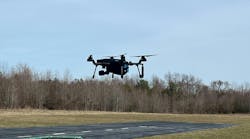A few things to consider before investing in intelligent surveillance
November 22, 1963. Abraham Zapruder stood on a 4-foot high concrete pedestal along Elm Street in Dealey Plaza. From his elevated position, Zapruder’s state-of-the-art Model 414 PD Bell & Howell home movie camera filmed President John F. Kennedy’s limousine as it turned onto that Dallas, Texas street. For a total of 27 seconds, Zapruder shot 486 frames of standard 8mm Kodachrome II safety film, running at 18.3 frames per second. That film was the centerpiece of the Warren Commission hearings on the JFK assassination. Every one of the 486 frames has been studied by law enforcement, scholars, historians and now, tens of thousands of people on the internet, making the Zapruder film the most studied crime surveillance video in history and the first instance of surveillance video having significant impact on a criminal investigation.
More than 60 years later, and many instances of home and security video capturing significant events, digital technology has launched us into an era of surveillance far more advanced than Zapruder’s now-primitive Bell & Howell movie camera. The digital video, IP camera surveillance market is in a significant upsurge--analyst group Markets-and-Markets predicts $38 billion dollars will be spent on intelligent surveillance by the end of 2015, representing a 20 percent growth during the past seven years. And it’s not just cameras. Biometric surveillance software is adding new dimensions to surveillance, as facial recognition technology helps law enforcement identify faces in real-time and compare them against images stored on various databases--local, regional, national and international. In today’s world, the uptick in surveillance spending is based on real need. High-definition, video-monitoring and content analysis is essential to securing border, ports and terminals, infrastructure protection, government facilities and installations.
K-12, college and university school police departments are also turning to intelligent surveillance as a force multiplier to assist their officers in their efforts to keep students, staff, and property safe from violence, theft and vandalism. Of note is the San Bernardino City Unified School District in Southern California with 74 campuses and a school district police staff of only 20 full-time officers. San Bernardino County is arguably one of the most violent and crime-ridden municipalities in Southern California. Schools were often the target of gangs, vandals and thieves. It was costing the District tens of thousands of dollars each month. The school district and police department took action in the form of an IP-based Intelligent Surveillance System, designed by technology integrator VectorUSA in Torrance, California. The system is an open architecture platform utilizing OnSSI Software, Sony High Definition cameras, Cisco infrastructure and HP Servers. School sites are viewed real-time in the SBCUSD Police Dispatch Center--also designed by VectorUSA. The result has been a significant reduction in school violence, vandalism and theft. Last week, two men were arrested while allegedly trying to steal the recently installed surveillance cameras at a district high school. What one suspect didn’t realize as he peered into the surveillance camera was an alarm had been triggered at the school police dispatch center ... and a school police dispatcher was peering back at him! SBCUSD police officers responding to the call were also able to see the live, high-definition video of the two suspects on the laptop computers in their squad cars. With this technology, the suspects were quickly apprehended, evidence was collected, and the cameras were recovered. The lesson learned is that the same technology could also assist officers responding to an active shooter call or any other emergency. Video from the surveillance cameras can not only be seen real-time at the dispatch center, but also by the responding officers on laptops installed in their patrol cars. This is life saving technology not only for officers, but for those they protect.
From a law enforcement perspective, intelligent surveillance should not and cannot be seen as a replacement for rank-and-file officers on the beat. Intelligent surveillance systems are installed to protect people, monitor suspicious public activity and protect property. The expected outcomes of installing an intelligent surveillance system are reduced risk of crimes and false accusations and claims. This requires a vigilance that must be augmented with technology that can not only watch, but also react to abnormal situations and human behaviors. But all too often, surveillance systems are improperly installed, ill-maintained, or the operators have a “set it and forget it” mentality--hoping their system will capture an event. Needless to say, these can be costly mistakes.
In this era of budget constraints police departments must look at the overall cost of implementing their own surveillance systems. The cost is not in cameras; the real cost is in data storage and managing the network. Individual officer body cameras are an excellent example of this. Supporters of the body cameras say they help prosecutors close cases faster, reduce use-of-force incidents and make allegations of misconduct against officers easier to probe. The greatest value of a body camera system is that of a silent witness: the video is able to speak for officers when officers cannot speak for themselves. Both sides in a videotaped encounter behave better, they say, leading to fewer complaints and legal settlements. However, departments are wrestling with whether they can afford to equip all their officers with body cams, and how often the cameras should be turned off to reduce the amount of stored data. In some cities the body cameras worn by beat cops on their uniforms or glasses were purchased at deep discounts when departments inked data-management deals that were far more lucrative over the long run for the technology integrator.
Factors to consider when planning surveillance technology include:
- Cost Effectiveness: Will the technology be used frequently enough to justify its purchase?
- Training: How much training is required for officers to properly use the technology?
- Service and Maintenance Requirements: What is the cost associated with operating maintenance and maintenance/service agreements
- Operational Needs: Is the technology designed to make officers' jobs officers safer, easier or more effective?
Today, the question being asked is, “Is it possible to keep a city’s streets safe with fewer police officers and an increased use of surveillance technology?” There is no simple answer. When it comes to aiding police with their investigations, technology can be valuable in helping law enforcement agencies identify potential witnesses and convict a criminal. But while surveillance is a valuable tool, it can never replace law enforcement personnel and solid investigation techniques. A prime example is the Zapruder Film. While it is the clearest film of the JFK assassination, to this day there is debate over what each frame depicts, what significance to the investigation each frame holds, and even the validity of the film itself. Time will tell if we ever really determine what happened that fateful autumn day.
Mark Rocchio is an award-winning journalist who brings unique knowledge to every story he writes. A native of Southern California and a CSULB School of Journalism graduate, Mark was on the front lines of the Malibu-Topanga Fires, the 1991 Persian Gulf War, and the Los Angeles Riots; and has covered more train accidents, commercial airline disasters, and police actions than he can remember.



